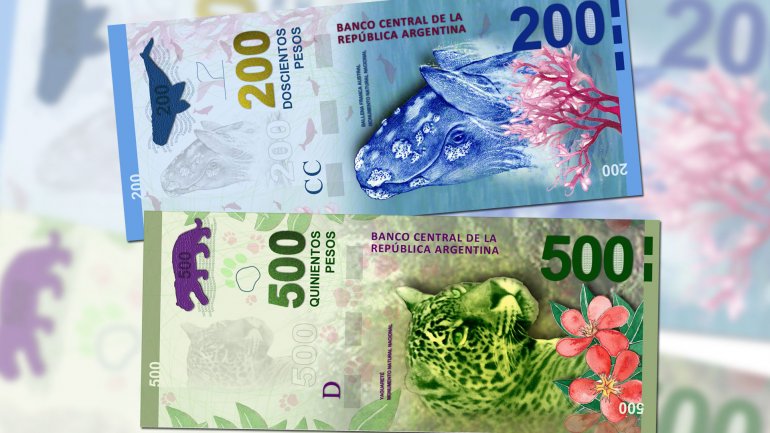|
By Paul-Martin Foss
Inflation-racked Argentina is preparing to issue larger-denomination banknotes to alleviate critical shortages of cash in the country. What a difference between the Argentine government and most other Western governments, which seek to crack down on the use of cash. Argentina’s 100 peso note is equivalent to a little over $7, and with inflation in Argentina having run in double digits for years, the 100 peso note is becoming too small a denomination to facilitate cash transactions. Therefore the Argentine central bank will be issuing 200 and 500 peso notes this year, and a 1,000 peso note next year. While the devaluation of the peso and the issuance of larger denomination banknotes conjures up images of Weimar hyperinflation, it is refreshing that the Argentine authorities are at least trying to facilitate cash transactions rather than crack down on them.
Compare this to the United States, where the Secretary of the Treasury is required, under Section 16 of the Federal Reserve Act, to print Federal Reserve Notes in denominations of up to $10,000:
In order to furnish suitable notes for circulation as Federal reserve notes, the Secretary of the Treasury shall cause plates and dies to be engraved in the best manner to guard against counterfeits and fraudulent alterations, and shall have printed therefrom and numbered such quantities of such notes of the denominations of $1, $2, $5, $10, $20, $50, $100, $500, $1,000 $5,000, $10,000 as may be required to supply the Federal reserve banks. Such notes shall be in form and tenor as directed by the Secretary of the Treasury under the provisions of this Act and shall bear the distinctive numbers of the several Federal reserve banks through which they are issued.
In practice, however, the Treasury has not printed notes above $100 since 1945, and the Federal Reserve has not issued notes above $100 since 1969. The ostensible discontinuation of those notes was due to lack of use. However, now that inflation has eroded the value of Federal Reserve notes it makes more sense than ever to issue larger-denomination notes. The $20 Federal Reserve Notes that we receive at ATMs today buys the equivalent of what $3 would have purchased in 1969. And the $100 bill in 1969 would buy the equivalent of $646 today. It would make a lot of sense to begin printing $500 and $1000 bills again.
But due to the war on drugs and the war on cash, US authorities don’t want to issue bills larger than $100, as they claim it would only facilitate money laundering. By maintaining its policy of not printing notes larger than $100 and by increasing the reporting requirements on cash transactions, the Treasury has pushed more and more financial transactions into the electronic arena, where they are easier to monitor and control. The desire for control is ultimately driving factor behind the war on cash in the United States and in Europe. That’s why it’s so refreshing to see Argentina’s new government immediately enacting policies that respond to consumer demands for cash. Let’s hope that President Macri is able to bring the central bank under control so that Argentina won’t need to issue any larger banknotes in the future. This article was originally published at The Carl Menger Center. Comments are closed.
|
Archives
July 2024
|


 RSS Feed
RSS Feed



